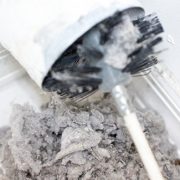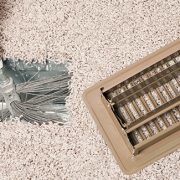Why It’s So Important to Clean Your Air Duct Regularly
The air ducts in your home probably don’t take up much room in your thoughts. Most of us have other things to be focusing on. But to assume that air ducts don’t matter and that they don’t have any impact on how you live your life would be a big mistake. It’s actually the case that there are lots of reasons to keep them clean because it has more of an impact on your life than you think.
Having the air ducts in your home cleaned can be taken care of by our professional team, so you don’t have to do it by yourself. In the end, the importance of this will outweigh any reservations you might have. To prove how important this is for you, read on and learn about the impact it can and does have.
Indoor Air Quality Will Improve
The quality of the air that you’re breathing inside your home will drastically improve if you have your air duct cleaned regularly, and that should be enough to persuade you to make this change.
- Air quality matters: The air you breath has a direct impact on your long-term and short-term health, so improving its quality is vital.
- You might not notice the difference, but it’s there: The difference in air quality is not always noticeable, but it’s certainly there.
- Health problems could be averted: You could avoid all kinds of nasty health problems by breathing cleaner air.
Disposes of Poisons and Residue
There are lots of poisons and all sorts of residue that can build up inside your air ducts over time, and these are not the kinds of things you want entering your home through the HVAC system. That’s why you should have the ducts cleaned out properly.
- There are all kinds of nasty things in your system: These ducts carry all kinds of bad things that you could barely imagine.
- Removing them regularly is essential: Removing them is vital because otherwise, they will damage the system as well as your health.
- It takes a professional to do this right: You should get help from professionals because they know how to clean them out properly.
Can Ease Pre-Existing Medical Conditions
Anyone with pre-existing respiratory medical conditions will find that their symptoms in the home will ease somewhat when the air ducts are cleaned out because they’ll be breathing cleaner air.
- Respiratory conditions will be eased: These conditions are made easier to deal with when you breathe cleaner air.
- The home will be a healthier environment: In general, the entire home will become a much healthier environment.
Make Your HVAC System More Effective
Anyone with a decent HVAC system wants to be getting the most out of it they can. That’s perfectly normal and natural. By keeping it clean, you will also make it more functional and more effective.
- Blocked air ducts don’t perform well: When the ducts are blocked up, it becomes impossible for them to do their job properly, so you’ll need to clean them to improve performance.
- You’ll notice the difference: As soon as the ducts become cleaner, you’ll notice the system performing better.
Save Yourself Some Money
By keeping the system clean, you might also be able to save yourself some money. This applies to the long-term as well as the short-term. No one can turn down the chance to save cash, so this should provide you with some needed motivation.
- Less energy will be used to reach the desired temperature: Achieving the desired temperature in your home becomes easier and faster when the ducts are clean, meaning you’ll spend less on energy to make that happen.
- Regular cleaning is cheaper in the long run: In the end, you’ll save money by regularly cleaning rather than having to spend big in the future on massive cleaning jobs or replacements.
Keeps Your HVAC System Running for Longer
Your HVAC system might be getting old, but it’ll be a long time until you have to replace it all if you get better at keeping your air ducts properly clean. When the system is running for longer, you’ll avoid having to spend big too.
- The long-term condition of your HVAC system is key: By acting now, you can make sure that your HVAC system has a healthier and cleaner future.
- Regular cleaning lessens the chance of problems: You will experience far fewer problems with your system if you keep it as clean as it can be.
When you get your air ducts cleared out, you improve your health, improve your home and save some money. So there are plenty of great reasons to get your air ducts cleaned regularly if you haven’t done this for a long time. And there are many costs associated with ignoring this issue and leaving them to get dirty.
If you need our professional service to solve these problems for you and be able to breath clean air. Contact us, we can provide more details of how we work with these kinds of issues.


